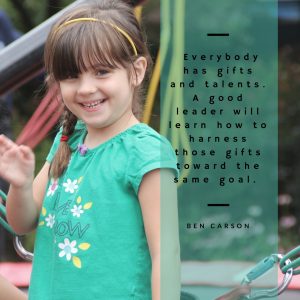“The art of leadership is saying no, not yes. It is very easy to say yes.”
– Tony Blair
With all respect to Mr. Blair, I have to disagree. Perhaps it is appropriate in politics; in education, however, we need more leaders who are willing to say “yes.”
The public education system is bounded by rules and expectations. Some of those are province-wide – the curriculum, the hours of school, the size of classes. Some are specific to a particular school or community. It seems as if teachers are being told no all the time.
The best leaders in education, therefore, are the ones who say yes. These are the people who allow their teachers to apply new understandings and pedagogically-sound practices in their classrooms rather than hum and frown and remind the teachers that “We just don’t do things that way,” or “The parents won’t understand.”
More than that, the best leaders in education actively encourage their teachers to try new methods of teaching and learning in their classroom. They celebrate those teachers’ successes and support them when challenges arise. They say yes not just in face-to-face interactions but also in the culture of innovation and the sense of safety that they develop in their schools.
I have been in both kinds of schools. I’ve had administrators who told me that the school community wasn’t ready for the (district-approved) stories that I was using in the classroom. I’ve had administrators who questioned my work in developing a flipped math classroom, because “was it really fair to expect students to watch the videos [teaching the math concepts] at home?” I’ve been in schools where there was almost no point in studying new research in teaching and learning because I was too scared to implement what I was learning for fear of doing something “wrong.”
But I’ve been in the other kind of schools as well. I’ve been supported by administrators who have explicitly encouraged the learning I was doing on how to better help my students, who have been not only willing but eager to sit down with me and discuss advancements in teaching and learning. The administrators of my current school have made a point of connecting with me, of showing that they value what I do in the classroom, and of bringing to my attention learning opportunities that support my goals for my students’ education.
George Couros talks a lot about developing a culture of innovation in schools. This type of culture, where people go beyond being excited to try new methods of teaching and learning and start to create new methods of teaching and learning, can only happen in a school where “yes” is more common than “no.” Excellent administrators, therefore, are innovative leaders who build a climate of “reciprocal trust,” where teachers’ focuses can be on developing students as lifelong learners rather than on pleasing administrators and school districts. Find the strengths and talents of your teachers, encourage those strengths, and let your teachers become incredible leaders of learning in their own classrooms.
In the end, the art of educational leadership is creating an environment where “yes” is much more common than “no.” Only in such an environment can teaching and learning truly thrive.


Leave a Reply